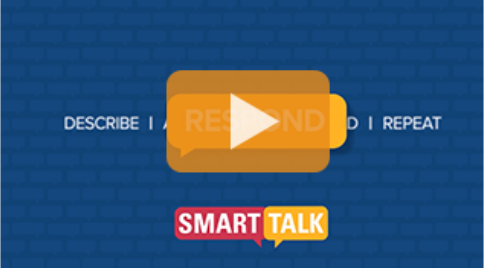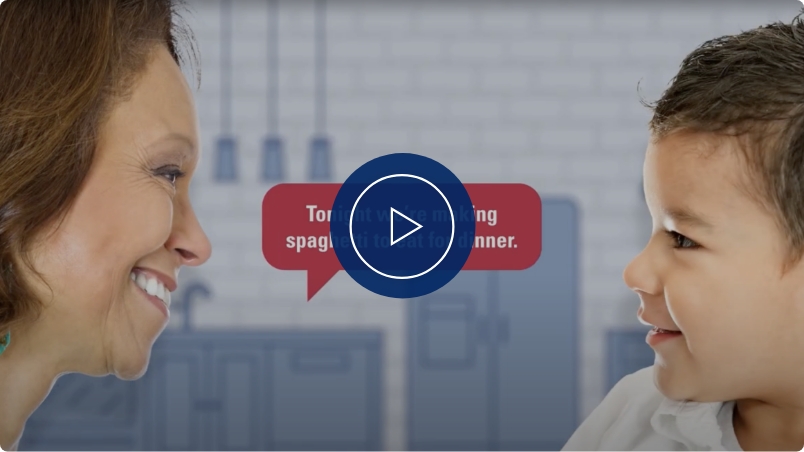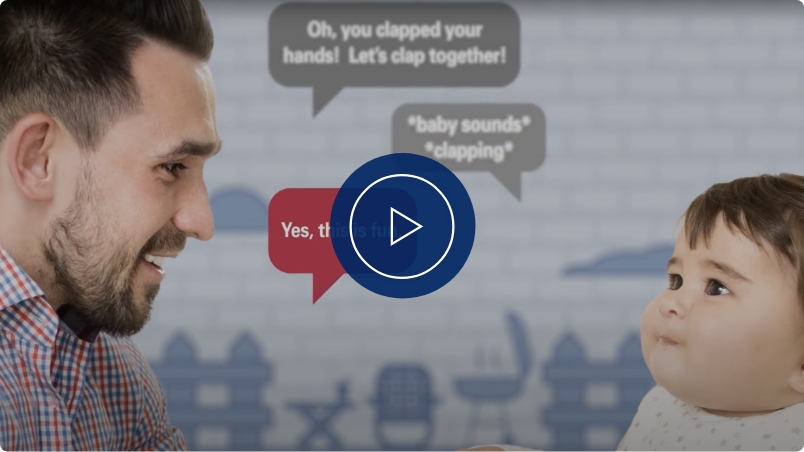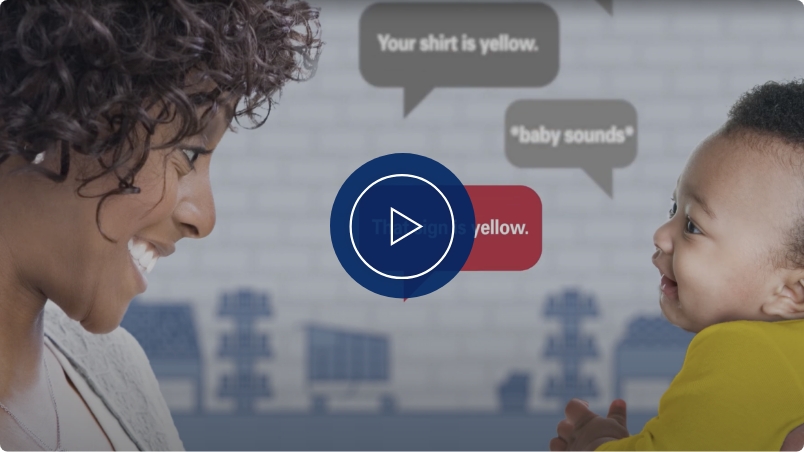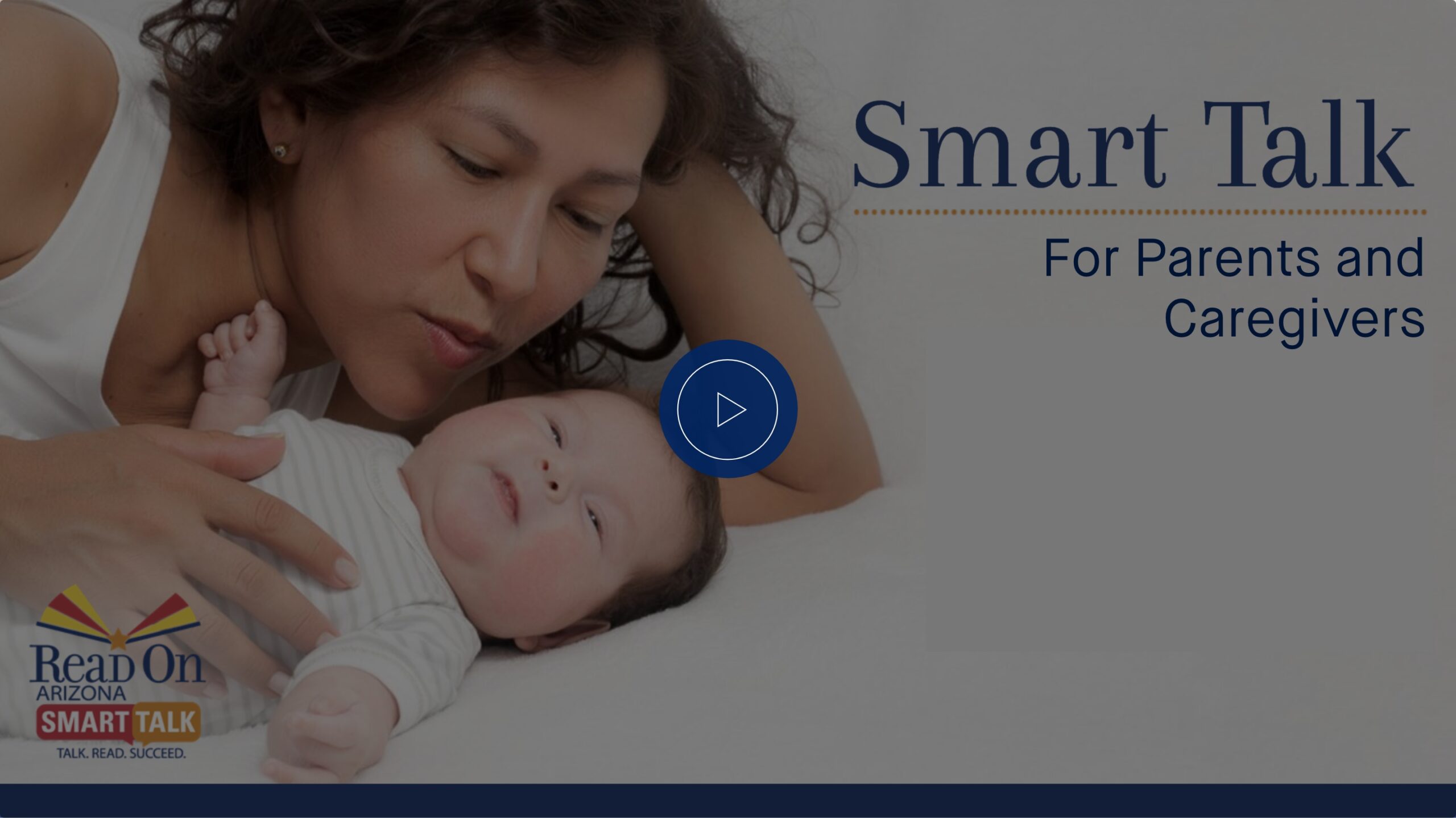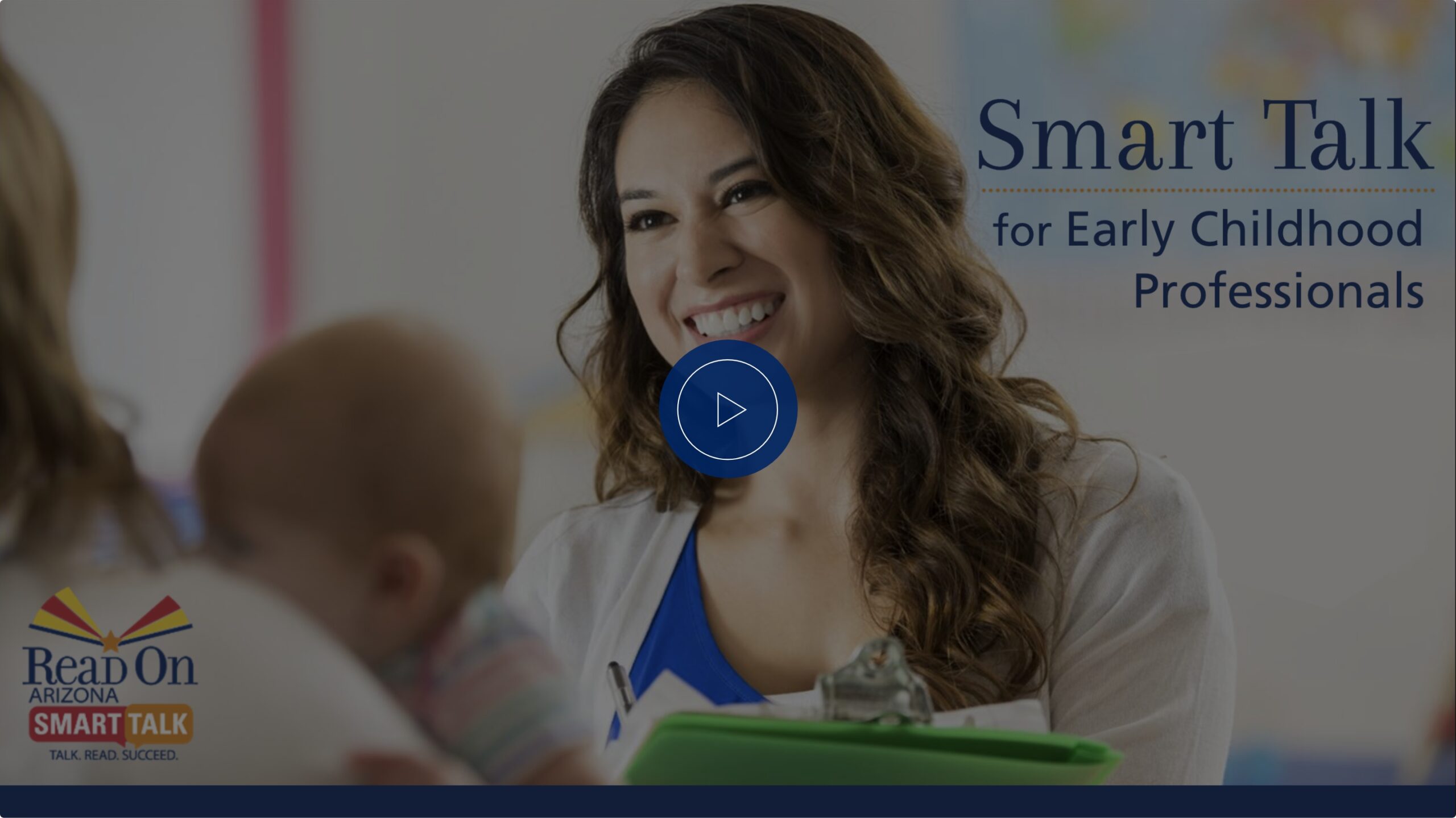
Smart Talk is having back-and-forth conversations with young children — even before they can use words — to help them develop language and literacy skills.

Smart Talk offers tips and information to help parents and caregivers of babies and toddlers (from birth to age 3) learn about the power of quality conversation and how to help young children learn and grow.
It’s easy to do, and everyday moments like getting dressed, mealtime, baths, diaper changes, and bedtime are great opportunities for Smart Talk.

-
Parents and Caregivers
Talking and responding to your little one with love and attention builds their brain. It’s not about the number of words they hear. What matters most is the quality of the conversation. Babies and toddlers learn from having fluid, back-and-forth interactions: you speak, I respond.
Babies can’t respond with words, but that doesn’t mean they’re not part of the conversation. Eye contact, facial expressions, crying, smiles, and touch are all ways your child communicates with you. They’re all invitations for you to listen and respond in a way that’s relevant and keeps the conversation going.
Even a little bit of conversation throughout the day makes a big difference. It helps your child develop the vocabulary and language skills they’ll need to be good readers and successful in school. Research shows that how well a child reads by the end of third grade often predicts whether they will graduate high school.
Make Smart Talk part of your daily routine, and talk in the language you are most comfortable with. Ask questions, introduce new and unusual words, and use a caring, loving tone.
Here’s how.
-
Describe
Talk about what you are doing, where you are, or what you see.
-
Ask
Ask open-ended questions — who, what, where, when, and why — even if your child can’t respond with words.
-
Respond
Be sure to listen and respond to your child. Emphasize the back and forth in everyday activities by reacting to what your child does or says.
-
Read
Reading books and telling stories are simple ways to introduce new and unusual words and build your child’s vocabulary.
-
Repeat
Repeat words and/or echo what your child says and shows interest in.
-
Additional tips and information:
For Early Childhood Professionals
In addition to supporting families with young children, Smart Talk is also intended to help early childhood practitioners understand the importance of back-and-forth interactions with infants or toddlers. Read On Arizona partnered with Arizona State University’s Center for Child Well-Being to develop short online instruction sessions based on Smart Talk tips that are interactive, accessible to all, whatever educational level, cultural background, or learning style, and focused on the learner experience.
Resources
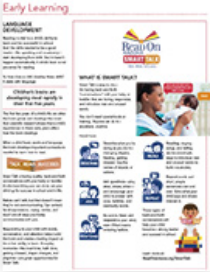
Smart Talk Overview
Download PDF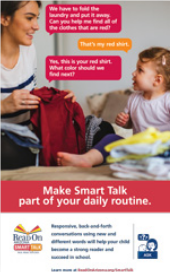
Poster: Ask
Download PDF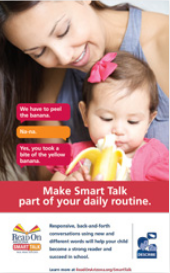
Poster: Describe
Download PDF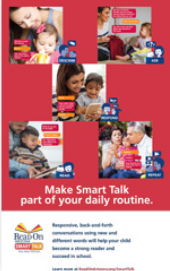
Poster: Overview
Download PDF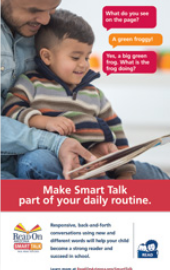
Poster: Read
Download PDF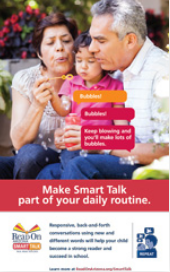
Poster: Repeat
Download PDF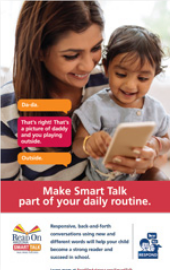
Poster: Respond
Download PDF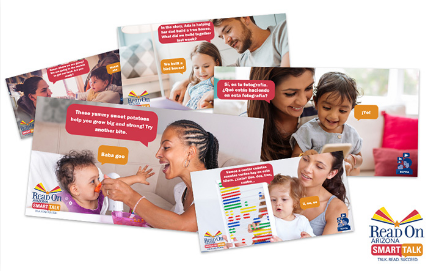
Social Media Toolkit
Download Assets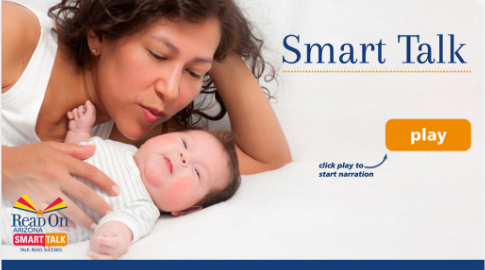
Tutorial: Smart Talk Interactive Learning
Watch
Tutorial: Smart Talk Interactive Learning for Practitioners
Watch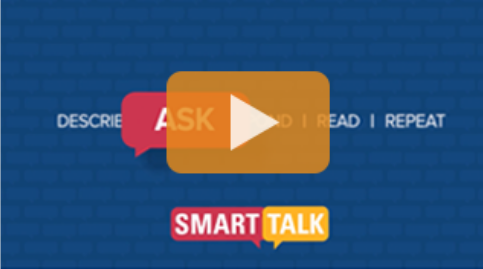
Video: Ask
Watch
Video: Describe
Watch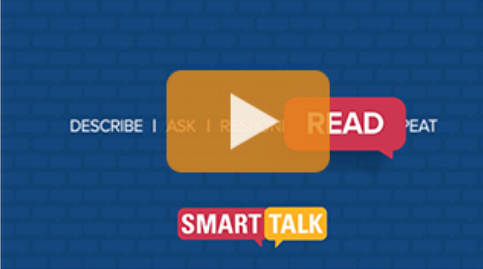
Video: Read
Mirar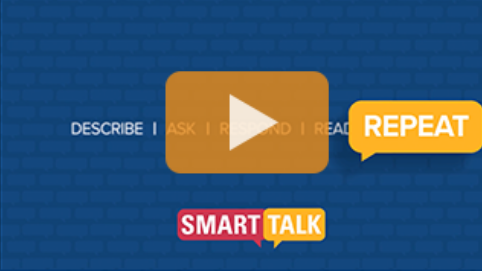
Video: Repeat
Watch